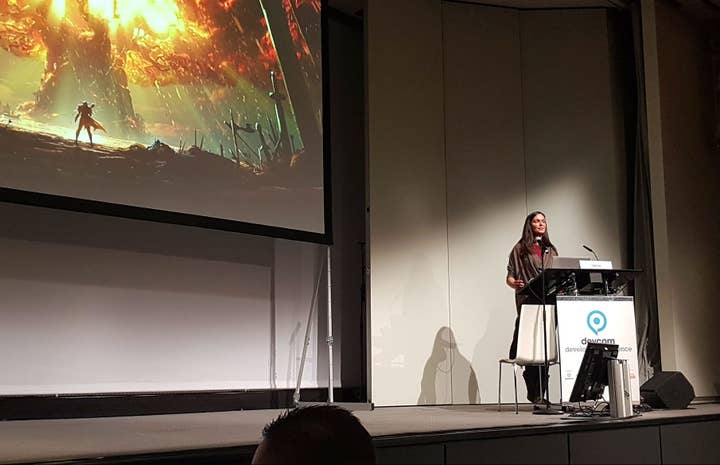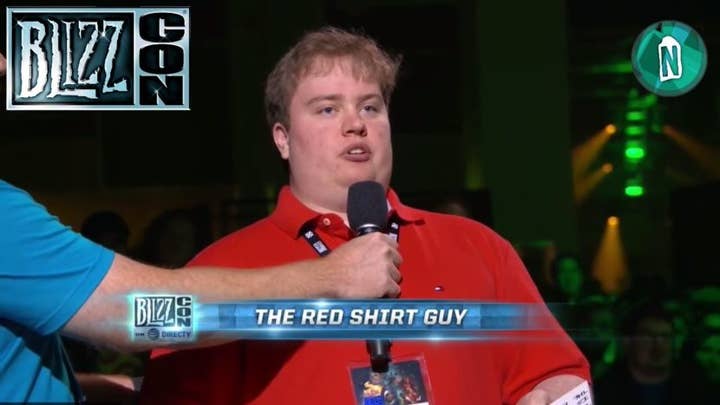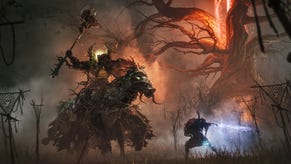Blizzard: "Who is your 'Red Shirt Guy'?"
At Devcom this week, Blizzard's Saralyn Smith advised developers to find and celebrate the stars in their communities
May 15, 2012, a day that will live in infamy - for the hardcore fans of Diablo, at least.
It was the day that millions of players attempted to play the first new entry in the series for 12 years, and a great many of them failed to do so. Instead, they were mocked by the now notorious "Error 37" message, a word and a number that, among Blizzard's fans, has become shorthand for arguably the company's roughest period in a decade of smooth sailing.
"Within 24 hours of the launch of Diablo III, with so many players having issues logging into the game, we had posted 80 updates," Saralyn Smith recalled, in a talk at Devcom this week. "And that's just in English; if you count the localisation it's many times more than that.
"It was all we could do to keep the teams from either crying in exhaustion or drinking themselves into a stupor - and I wish I was kidding."
"A single person on social media, with the help of virality, can change your brand forever"
Smith remembers the day well, first and foremost as a Diablo fan, but also as a relatively new recruit in Blizzard's ranks. It wounded the game's loyal community, and that was only healed by months of hard work and the "near flawless" launch of the Reaper of Souls expansion pack two years later.
Smith eventually rose to lead community development across the globe, but that experience was, "a front row seat, seeing how Blizzard has elevated player focus and a community-centricity into every aspect of game development. It's not owned by just one team. It's now an imperative for the entire company."
Blizzard is a unique company in many ways, with the kind of influence and resources that mean not every one of its methods is applicable to smaller developers. However, Smith argued that its approach to community is built on principles that any studio can adopt to better navigate an industry that grows more complex and difficult to control all the time.

"There's complexity because there has been specialisation," she told the Devcom audience. "Ten years ago, managing a community meant speaking to them on your game forum. Now, there's forums on Reddit and YouTube and Twitch and Twitter and Facebook and Instagram and Snapchat and Imgur.
"There's been a power shift; where we used to control our brand and our brand message, now a single person on social media, with the help of virality, can change your brand forever.
"The power is with the influencers. We all know that. It's the age of influencers."
Smith posited that Blizzard's games have actually grown stronger in the midst of all that change. The reason, she said, was a belief within the company that, "game building is community building... We embrace this as our core strategy."
"At Blizzard, influencers are not just marketing partners. We also think of them as game development and community building partners"
Blizzard hosts regular "summits" at its campus in California, where pro-players and influencers are brought in to playtest new builds of games and updates under NDA. Some are as small as "just a few people," some are much larger, but these events have become invaluable to the way the company's developers work.
"At Blizzard, influencers are not just marketing partners," Smith said. "We also think of them as game development and community building partners."
Smith offered the example of Alliestrasza, a Hearthstone streamer that Blizzard noticed as they reached out to the game's community to help reveal cards from a new pack.
"When we first discovered her she had maybe 70 or 80 followers on Twitch, but we really liked her attitude," Smith said. "She had great values, great charisma. We decided to spotlight her even though she wasn't known yet."
Alliestrasza was featured on Battlenet and on Blizzard's social channels, where her streams caught the attention of more and more people. Today, she has more than 100,000 followers on Twitch, and Smith described her as a "crucial" part of the Hearthstone ecosystem. In boosting "promising content creators" in this way - as opposed to simply competing for the attention of the biggest names - it's possible for a developer to help shape the community around their games.
"I'd encourage you [to do this]," Smith said. "It doesn't have to be the big guys that are already established and nearly mainstream. Keep your eye out for up and coming talent and invest in them."

Studios like EverSpace creator Rockfish have taken a similar approach with streamers, but Blizzard has frequently helped remarkable members of its community to rise to prominence. Smith cited the example of Ian Bates, who stumped World of Warcraft's developers with his encyclopedic knowledge of the game's lore at BlizzCon.
"Ian has a...particular brain for details, and he noticed a discrepancy in WoW, seeing something different in a book that we published from what he knew he experienced in the game, seeing the death of Falstad [Wildhammer]. He was right. He stumped the developers, who were live on stage. And the community loved that he did that."
"Who is your Ian Bates? Who is the someone spotting early smoke signals for you?"
Dressed in a scarlet shirt, Bates was celebrated by the community as "Red Shirt Guy," and immortalised in WoW itself as a character called "Wildhammer Fact Checker." Smith said that Bates is "famous for us," and the same applies to Leroy Jenkins, who was also added to the game after a notorious display of bravado in a multiplayer raid.
"Something for you to think about," Smith offered. "Who is your Ian Bates? Who is the someone spotting early smoke signals for you? Maybe it's not an individual. Maybe it's a certain part of the internet, a forum or fansite that's particularly insightful and in touch."
Of course, the level of fame that Blizzard can grant an Ian Bates, or a Leroy Jenkins, or an Alliestrasza can't be replicated by just any studio. But every developer can take time to recognise and reward the members of their communities, whatever size they may be.
Smith recommended other accessible methods Blizzard employs to build and strengthen community: the videos that accompany every Overwatch update are "just Jeff Kaplan in front of a backdrop," with little or no production overhead; Blizzard also empowers select members of its developer teams to interact with fans on Twitter, through both personal and official accounts.
"We're not avoiding the hard questions," Smith said, showing a slide with responses to some of the queries that come from fans. "You'll see a humanity in the responses. We're saying 'I don't know' or 'I'm sorry about that' or 'You're right, here's a fix'."
If on a human level it seems obvious to engage with your community, Smith closed by reinforcing the business case by citing a Fandom report that put spending among "heavy gamers" at 230 per cent higher than spending among casual gamers. As user acquisition costs continue to rise, Smith said, that data-point is impossible to ignore.
"Intuitively and financially it makes sense to keep your community engaged, and keep them happy," Smith said, before acknowledging, "We don't always get it right, but we aspire to."
GamesIndustry.biz is a media partner for Devcom. We attended the show with assistance from the organiser.








